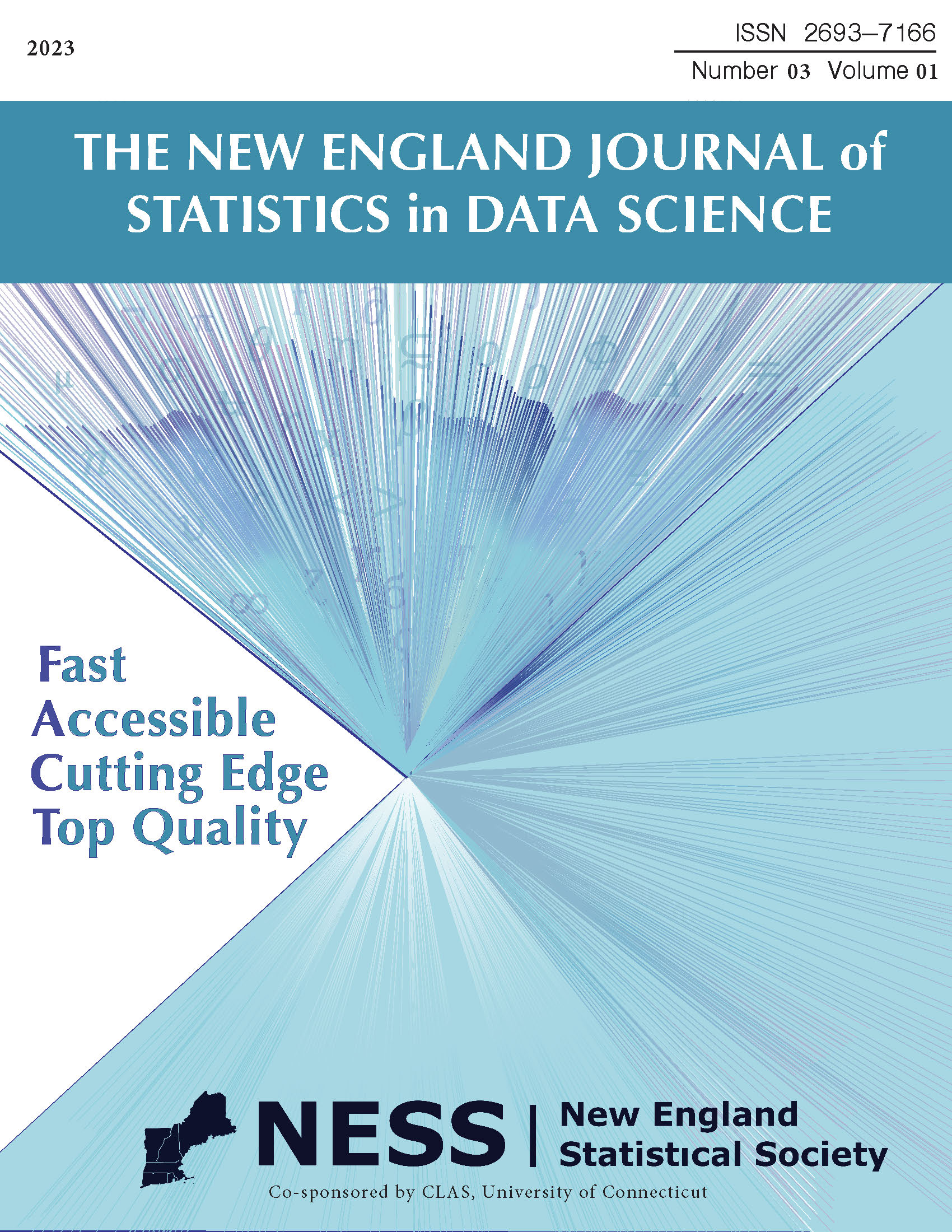Volume 1, Issue 3 (2023), November 2023
The New England Statistical Society webinar on selected papers for this issue is available here.

Order by:
Pub. online: 24 May 2023
Type: Methodology Article
 Open Access
Open Access
Area: Statistical Methodology
Journal:
The New England Journal of Statistics in Data Science
Volume 1, Issue 3 (2023), pp. 415–425
Abstract
Pub. online: 15 Jun 2023
Type: Methodology Article
 Open Access
Open Access
Area: Statistical Methodology
Journal:
The New England Journal of Statistics in Data Science
Volume 1, Issue 3 (2023), pp. 426–438
Abstract